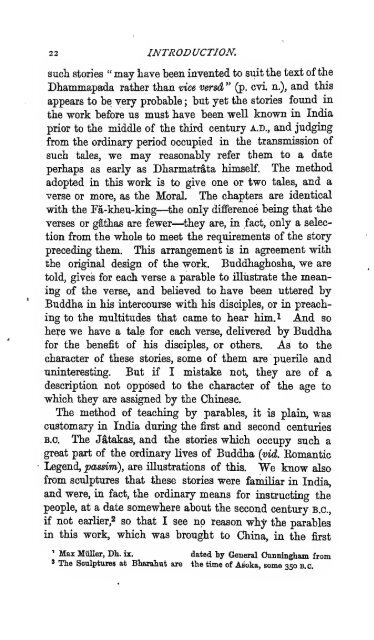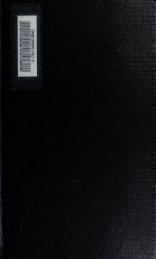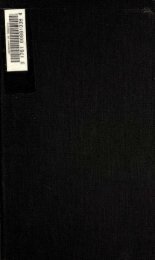Texts from the Buddhist canon : commonly known as Dhammapada
Texts from the Buddhist canon : commonly known as Dhammapada
Texts from the Buddhist canon : commonly known as Dhammapada
You also want an ePaper? Increase the reach of your titles
YUMPU automatically turns print PDFs into web optimized ePapers that Google loves.
23 INTRODUCTION.<br />
such stories " may have been invented to suit <strong>the</strong> text of <strong>the</strong><br />
<strong>Dhammapada</strong> ra<strong>the</strong>r than vice, versd " (p. cvi n.), and this<br />
appears to be very probable ; but yet <strong>the</strong> stories found in<br />
<strong>the</strong> work before us must have been well <strong>known</strong> in India<br />
prior to <strong>the</strong> middle of <strong>the</strong> third century A.D., and judging<br />
<strong>from</strong> <strong>the</strong> ordinary period occupied in <strong>the</strong> transmission of<br />
such tales, we may re<strong>as</strong>onably refer <strong>the</strong>m to a date<br />
perhaps <strong>as</strong> early <strong>as</strong> DharmatrS,ta himself. The method<br />
adopted in this work is to give one or two tales, and a<br />
verse or more, <strong>as</strong> <strong>the</strong> Moral. The chapters are identical<br />
with <strong>the</strong> Ta-kheu-king—<strong>the</strong> only difference being that <strong>the</strong><br />
verses or gSth<strong>as</strong> are fewer^—<strong>the</strong>y are, in fact, only a selec-<br />
tion <strong>from</strong> <strong>the</strong> whole to meet <strong>the</strong> requirements of <strong>the</strong> story<br />
preceding <strong>the</strong>m. This arrangement is in agreement with<br />
<strong>the</strong> original design of <strong>the</strong> work. Buddhaghosha, we are<br />
told, gives for each verse a parable to illiistrate <strong>the</strong> meaning<br />
of <strong>the</strong> verse, and believed to have been uttered by<br />
Buddha in his intercourse with his disciples, or in preach-<br />
ing to <strong>the</strong> multitudes that came to hear him.l And so<br />
here we have a tale for each verse, delivered by Buddha<br />
for <strong>the</strong> benefit of his disciples, or o<strong>the</strong>rs. As to <strong>the</strong><br />
character of <strong>the</strong>se stories, some of <strong>the</strong>m are puerile and<br />
uninteresting. But if I mistake not, <strong>the</strong>y are of a<br />
description not opposed to <strong>the</strong> character of <strong>the</strong> age to<br />
which <strong>the</strong>y are <strong>as</strong>signed by <strong>the</strong> Chinese.<br />
The method of teaching by parables, it is plain, w<strong>as</strong><br />
customary in India during <strong>the</strong> first and second centuries<br />
B.C. The JStak<strong>as</strong>, and <strong>the</strong> stories which occupy such a<br />
great part of <strong>the</strong> ordinary lives of Buddha (vid. Eomantic<br />
Legend, p<strong>as</strong>sim), are illustrations of this. We know also<br />
<strong>from</strong> sculptures that <strong>the</strong>se stories were familiar in India,<br />
and were, in fact, <strong>the</strong> ordinary means for instructing <strong>the</strong><br />
people, at a date somewhere about <strong>the</strong> second century B.C.,<br />
if not earlier,^ so that I see no re<strong>as</strong>on why <strong>the</strong> parables<br />
in this work, which w<strong>as</strong> brought to China, in <strong>the</strong> first<br />
' Max MiiUer, Dh. ix. dated by General Cunningham <strong>from</strong><br />
!* The Sculptures at Bharahut are <strong>the</strong> time of Asoka, some 350 B.c.





